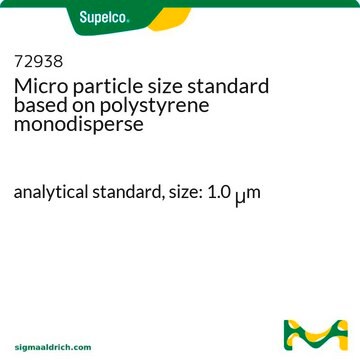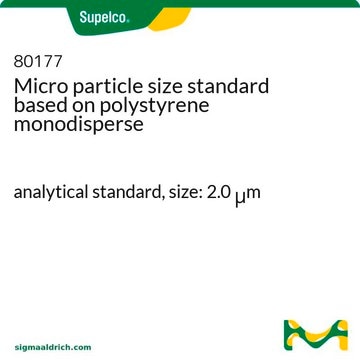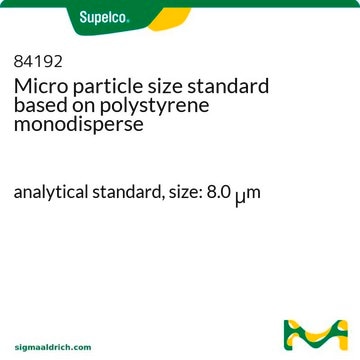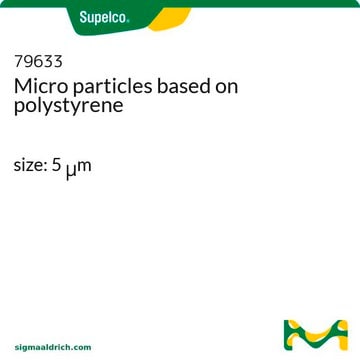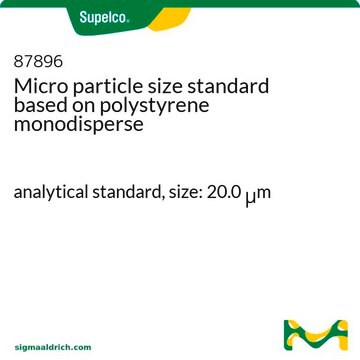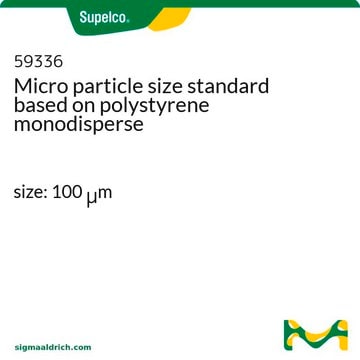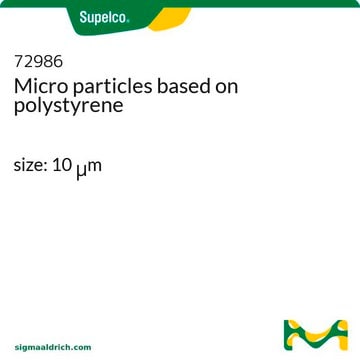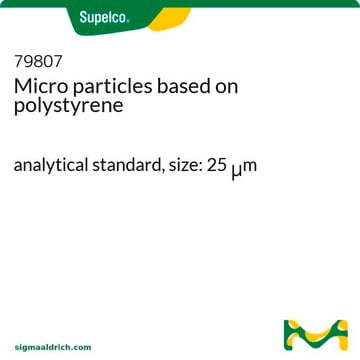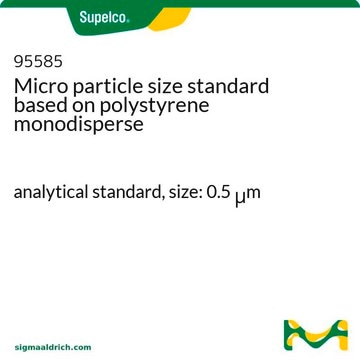80304
Micro particle size standard based on polystyrene monodisperse
analytical standard, size: 3.0 μm
동의어(들):
Monodisperse polystyrene latex particles (3 μm), monodisperse polystyrene microbeads (3 μm), monodisperse polystyrene microspheres (3 μm), Size standards
로그인조직 및 계약 가격 보기
모든 사진(1)
About This Item
추천 제품
일반 설명
Monodisperse polystyrene based micro particles (size: 3.0 μm) are a size standard, designed to identify the particle size distribution (PSD) profile of test samples.
애플리케이션
Used to validate and monitor the performance of particle sizing equipment.
Also used:
Also used:
- in acoustic traps to study the effect of non-contact retention of microparticles on trapping performance of lab on chip systems
- to synthesize microsphere-based interferometric optical probe called reflectophore
특징 및 장점
- suitable for routine instrument calibration checks and corrections
- available in 5 mL pack size as a neat sample
분석 메모
For every lot exact values of particle size and standard deviation are determined with an accuracy of 0.001 μm. The size determination of these particles follows procedures described by National Institute of Standards and Technology (NIST, USA) respectively by the Community Bureau of Reference (BCR), esp.:
- Transmission electron microscopy (TEM)
- Scanning electron microscope
- Light microscopy
- Coulter™ counter with MDF-system
법적 정보
Coulter is a trademark of Beckman Coulter, Inc.
Storage Class Code
10 - Combustible liquids
WGK
WGK 3
Flash Point (°F)
410.0 °F
Flash Point (°C)
210 °C
개인 보호 장비
Eyeshields, Gloves
Choose from one of the most recent versions:
이미 열람한 고객
Frequency tracking in acoustic trapping for improved performance stability and system surveillance
Hammarstrom B, et al.
Lab on a chip, 14(5), 1005-1013 (2014)
Growth phenotype screening of Schizosaccharomyces pombe using a Lensless microscope
Penwill AL, et al.
Biosensors And Bioelectronics, 54(8), 345-350 (2014)
Yongjae Jo et al.
Nature communications, 9(1), 4577-4577 (2018-11-06)
Fluorescent optical probes have rapidly transformed our understanding of complex biological systems by providing specific information on biological targets in the natural living state. However, their utility is often limited by insufficient brightness, photostability, and multiplexing capacity. Here, we report
An engineered thermal-shift screen reveals specific lipid preferences of eukaryotic and prokaryotic membrane proteins
Nji E, et al.
Nature Communications, 9(1), 1-12 (2018)
자사의 과학자팀은 생명 과학, 재료 과학, 화학 합성, 크로마토그래피, 분석 및 기타 많은 영역을 포함한 모든 과학 분야에 경험이 있습니다..
고객지원팀으로 연락바랍니다.